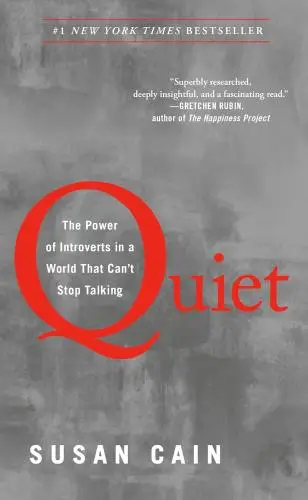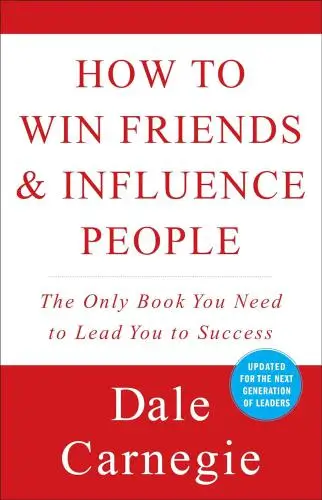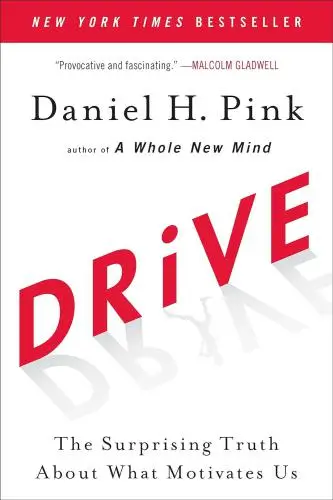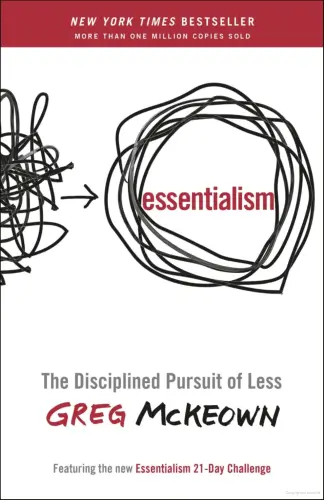
Feeling Good
The New Mood Therapy
What is Feeling Good about?
Feeling Good by David D. Burns is a groundbreaking book that offers practical techniques to help you overcome negative thinking and improve your mental health. Through cognitive behavioral therapy, Burns teaches readers how to challenge and change their distorted thoughts, leading to a more positive outlook on life. With easy-to-follow exercises and relatable examples, this book empowers individuals to take control of their emotions and live a happier, more fulfilling life.
About the Author
David D. Burns is a prominent psychiatrist and author, best known for his book "Feeling Good: The New Mood Therapy." His work primarily focuses on cognitive behavioral therapy (CBT) and its applications in treating depression and anxiety. Burns has significantly contributed to popularizing CBT through accessible and practical self-help literature.
10 Key Ideas of Feeling Good
Identify Distorted Thoughts
Begin by recognizing the negative thoughts that contribute to your feelings of unhappiness or depression. These thoughts often fall into categories like 'all-or-nothing thinking,' 'overgeneralization,' and 'mind reading.' Understanding these patterns allows you to challenge and question their validity, helping to reduce their impact on your mood.
Learn DeeperKeep a Thought Diary: Every day, jot down any negative thoughts that cross your mind. Next to each thought, categorize it (e.g., 'all-or-nothing thinking', 'overgeneralization', 'mind reading'). This practice helps you become more aware of the frequency and types of distorted thoughts you have.
Challenge Your Thoughts: Once you've identified a distorted thought, ask yourself evidence-based questions like 'What evidence do I have that this thought is true? What evidence do I have that this thought isn't true?' This process encourages critical thinking and often reveals that many negative thoughts are not fully supported by facts.
Practice Reframing: After challenging a distorted thought, try to reframe it in a more balanced and realistic way. For example, if you think 'I'll never be good at this,' reframe it to 'I'm having trouble with this now, but with practice and patience, I can improve.'
Set Small, Achievable Goals: Break down overwhelming tasks into smaller, manageable steps. This can help reduce feelings of inadequacy or failure and reinforce the idea that progress, no matter how small, is still progress.
- Example
If you catch yourself thinking, 'I messed up this presentation; I'm terrible at my job,' categorize this as 'all-or-nothing thinking.' Challenge it by listing times you've succeeded at work. Reframe it to 'The presentation didn't go as well as I hoped, but I've done well before and can learn from this experience.'
- Example
When you think, 'My friend hasn't replied to my text; they must be mad at me,' identify this as 'mind reading.' Challenge it by considering other reasons for the delay. Reframe it to 'There could be many reasons why my friend hasn't replied yet. It doesn't necessarily mean they're upset with me.'
Practice Cognitive Restructuring
Once you've identified distorted thoughts, work on reframing them in a more realistic and positive way. This involves examining the evidence for and against your negative thoughts, considering alternative interpretations, and using balanced thinking to counter pessimism. This technique helps in reducing negative emotions and promotes a healthier outlook.
Learn DeeperIdentify Your Negative Thoughts: Start by keeping a journal. Whenever you feel upset or stressed, write down the thoughts that were going through your mind at that moment. This helps in recognizing patterns and the common distortions in your thinking.
Challenge Your Thoughts: For each negative thought, ask yourself: 'What's the evidence that this thought is true? What's the evidence against it?' This helps in evaluating your thoughts more objectively.
Consider Alternative Interpretations: Ask yourself if there are other ways to view the situation. Could someone else see it differently? This encourages flexibility in your thinking.
Practice Balanced Thinking: Instead of thinking in extremes, try to find a more balanced perspective. For example, instead of thinking 'I'm a failure,' consider 'I didn't do as well as I hoped this time, but I can learn from this experience.'
Use Positive Affirmations: Counter negative thoughts with positive statements about yourself, even if you don't fully believe them at first. Over time, these affirmations can help shift your mindset towards a more positive outlook.
- Example
If you're thinking 'I'll never be good at my job,' challenge this by listing instances where you've received positive feedback or successfully completed tasks. A more balanced thought could be 'I have areas to improve, but I also have strengths that I bring to my team.'
- Example
When faced with the thought 'No one cares about me,' consider alternative interpretations. Perhaps friends haven't reached out because they're busy or assume you're busy. Reach out to them and express your feelings, which might lead to a more balanced view of your relationships.
Engage in Behavioral Activation
Increase activities that bring you joy and satisfaction. Start small with manageable tasks and gradually add more complex or challenging activities. Behavioral activation helps combat the inertia that often accompanies depression, boosting mood through accomplishment and engagement in meaningful activities.
Learn DeeperIdentify Activities You Enjoy: Start by making a list of activities that you find enjoyable or satisfying, no matter how small. This could include reading, walking, cooking, or even organizing your space.
Set Small, Achievable Goals: Break down these activities into small, manageable tasks. For example, if you enjoy reading but can't find the motivation, commit to reading just one page a day.
Schedule Your Activities: Plan when you'll do these activities. Having them scheduled can make it more likely that you'll follow through. Start with one or two activities per day, and gradually increase as you feel more comfortable.
Track Your Progress: Keep a journal or use an app to track the activities you complete. Reflect on how each activity made you feel and the progress you're making towards engaging more in life.
Reward Yourself: After completing an activity, especially one that was challenging for you, reward yourself. This could be as simple as acknowledging your effort or treating yourself to something small.
- Example
If you enjoy painting but have been avoiding it, start by setting up your painting area one day. The next day, just mix some colors. Gradually work up to painting for just 10 minutes a day, slowly increasing the time as you feel more engaged.
- Example
For someone who likes gardening but hasn't been active, begin by spending five minutes a day outside in your garden, perhaps watering plants or pulling weeds. Slowly increase the time spent and the complexity of gardening tasks as your interest and energy return.
Use the Double-Column Technique
Write down your negative thoughts in one column and, in a parallel column, write rational responses to those thoughts. This visual method helps you see the contrast between your automatic negative thoughts and the reality of the situation, facilitating a shift towards more positive thinking.
Learn DeeperIdentify Your Negative Thoughts: Start by being mindful of your thoughts throughout the day. When you catch yourself thinking negatively, jot it down. This could be anything from 'I'm not good enough' to 'I'll never get this right.'
Create Your Double-Column Chart: Grab a piece of paper or open a digital document and draw a line down the middle. Label one column 'Negative Thought' and the other 'Rational Response.'
Challenge Each Negative Thought: For every negative thought you've listed, think critically about it and write a rational, more positive response in the corresponding column. Ask yourself if the negative thought is truly accurate, or if there's another way to view the situation.
Reflect on the Differences: After you've filled out both columns, take some time to reflect on the differences between your negative thoughts and the rational responses. Notice how the negative thoughts might be exaggerated or unfounded.
Practice Regularly: Make this exercise a regular part of your routine. The more you practice, the quicker you'll be able to identify and counteract negative thoughts in real-time.
- Example
Negative Thought: 'I'm going to fail this exam, I'm not smart enough.' Rational Response: 'I've passed exams before when I've studied hard. One exam doesn't determine my intelligence.'
- Example
Negative Thought: 'Nobody likes me because I'm too awkward.' Rational Response: 'I have friends who enjoy my company. Being awkward sometimes doesn't mean I'm unlikable.'
Deeper knowledge. Personal growth. Unlocked.
Unlock this book's key ideas and 100+ more. Learn with quick, impactful summaries.
Read Full SummarySign up and read for free!
Feeling Good Summary: Common Questions
Experience Personalized Book Summaries, Today!
Discover a new way to gain knowledge, and save time.
Sign up for our 7-day trial now.
No Credit Card Needed

Similar Books

David and Goliath
Malcolm Gladwell
The 48 Laws of Power
Robert Greene
Switch
Chip Heath
Do What You Are
Paul D. Tieger
The Black Swan
Nassim Nicholas Taleb
Emotional Intelligence 2.0
Travis Bradberry
Quiet
Susan Cain
What to Say When You Talk to Yourself
Shad Helmstetter
The Laws of Human Nature
Robert Greene
Who Moved My Cheese?
Spencer Johnson
Emotional Intelligence
Daniel Goleman
12 Rules for Life
Jordan B. PetersonTrending Summaries

Peak
Anders Ericsson
Never Split the Difference
Chris Voss
Smart Brevity
Jim VandeHei
The Psychology of Money
Morgan Housel
The First 90 Days
Michael D. Watkins
Atomic Habits
James Clear
Thinking, Fast and Slow
Daniel Kahneman
The Body Keeps the Score
Bessel van der Kolk M.D.
The Power of Regret
Daniel H. Pink
The Compound Effect
Darren Hardy
How to Win Friends & Influence People
Dale Carnegie
Eat That Frog!
Brian Tracy
The Magic of Thinking Big
David J. Schwartz
Drive
Daniel H. Pink
Essentialism
Greg McKeownNew Books

The Millionaire Fastlane
MJ DeMarco
Losing My Virginity
Richard Branson
Venture Deals
Brad Feld
48 Days to the Work You Love
Dan Miller
Anything You Want
Derek Sivers
Running Lean
Ash Maurya
Blitzscaling
Reid Hoffman
The Founder's Dilemmas
Noam Wasserman
Founders at Work
Jessica Livingston
The Startup Owner's Manual
Steve Blank
The Art of the Start 2.0
Guy Kawasaki
The Four Steps to the Epiphany
Steve Blank
Flash Boys
Michael Lewis
Crush It!
Gary Vaynerchuk
